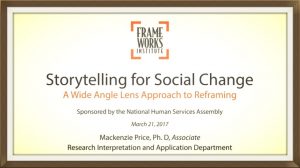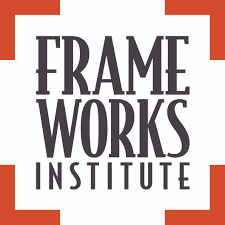Columnist Illustrates Familiar Challenge for Human Service Organizations
May 2, 2019 The New York Times columnist Nicholas Kristof recently highlighted the incredible success of an eight year-old chess champion, Tani, who is a Nigerian refugee. In an initial column, “This 8-Year-Old Chess Champion Will Make You Smile,” he described how Tani, a third grader, catapulted from novice chess player to state champion in his category in one year, despite living in a homeless shelter and lacking the resources of his peers. Kristof used the example to illustrate the truism that “Talent is universal, but opportunity is not.” In response, readers made donations and offered housing to Tani’s family. In reporting on the outpouring of support, Kristof observed in a second column, “Our Chess Champion Has a Home,” “One challenge I face is that readers often want to donate just to a particular individual I write about, without addressing the larger social problem.”
The New York Times columnist Nicholas Kristof recently highlighted the incredible success of an eight year-old chess champion, Tani, who is a Nigerian refugee. In an initial column, “This 8-Year-Old Chess Champion Will Make You Smile,” he described how Tani, a third grader, catapulted from novice chess player to state champion in his category in one year, despite living in a homeless shelter and lacking the resources of his peers. Kristof used the example to illustrate the truism that “Talent is universal, but opportunity is not.” In response, readers made donations and offered housing to Tani’s family. In reporting on the outpouring of support, Kristof observed in a second column, “Our Chess Champion Has a Home,” “One challenge I face is that readers often want to donate just to a particular individual I write about, without addressing the larger social problem.”
Human service organizations face similar challenges with how to use client stories to demonstrate the need for and benefit of programs and policies without the unintended consequence of the audience falling into the “Individualism Trap.” When primed with a tight focus on an individual, the public is more likely to attribute a person’s condition to their actions and choices, rather than understanding how the broader societal systems and conditions contribute to their situation. Through this lens, the public:
- Views human services as only direct, temporary interventions to address the basic needs of people in crisis,
- Overlooks the ways in which human services promote well-being at many stages of life through prevention, planning, advocacy, and research, and
- Sees human services as benefiting only direct service recipients, not the whole community.
 Fortunately, the FrameWorks Institute has guidance for just this conundrum! In “Storytelling for Social Change: A Wide Angle Lens Approach to Reframing” (password: nhsa), a webinar conducted on the National Human Services Assembly’s behalf, FrameWorks provides helpful recommendations on how to include personal stories in communications without cuing up unproductive misconceptions about human services.
Fortunately, the FrameWorks Institute has guidance for just this conundrum! In “Storytelling for Social Change: A Wide Angle Lens Approach to Reframing” (password: nhsa), a webinar conducted on the National Human Services Assembly’s behalf, FrameWorks provides helpful recommendations on how to include personal stories in communications without cuing up unproductive misconceptions about human services.
In particular, FrameWorks advises that examples of individuals should contribute to telling a thematic story that helps the audience see the broader issues, trends, systems, and solutions, rather than an episodic story, which focuses narrowly on individual actions, problems and responsibility. Such episodic stories can limit the sector’s ability to engage the public in the policy and systems solutions to the challenges people experience. As FrameWorks explains, “Episodic frames highlight how to fix the person experiencing a problem, while a thematic frame highlights how to fix the conditions that led to the problem.”
 In the webinar, FrameWorks walks through specific strategies for reframing stories collected from the field so that they cultivate a deeper understanding of what human services are, how they work, and how we all benefit from their solutions. For example, as shown in a past newsletter, FrameWorks translates an episodic story about one man who is homeless into an explanatory example by showing the broader context of what healthy, stable housing means for everyone and the human service organization’s role in fostering community well-being.
In the webinar, FrameWorks walks through specific strategies for reframing stories collected from the field so that they cultivate a deeper understanding of what human services are, how they work, and how we all benefit from their solutions. For example, as shown in a past newsletter, FrameWorks translates an episodic story about one man who is homeless into an explanatory example by showing the broader context of what healthy, stable housing means for everyone and the human service organization’s role in fostering community well-being.
Of course, don’t forget also to integrate the Building Well-Being Narrative into your thematic stories!
Additional FrameWorks’ resources on thematic and episodic storytelling include:
- Episodic vs. Thematic Stories, a FrameWorks Institute FrameByte.
- Strategically Reframing Success Stories, an example of how to shift from an episodic success story to a thematic success story.
- Checklist for Advocates, a quick-reference tool to help you determine if your communications are telling an episodic or thematic story.
- The Problem With Telling Compelling Personal Anecdotes, a FrameWorks Institute FrameByte.
- Vivid Examples: What They Mean and Why You Should Be Careful Using Them, a FrameWorks Institute eZine.

